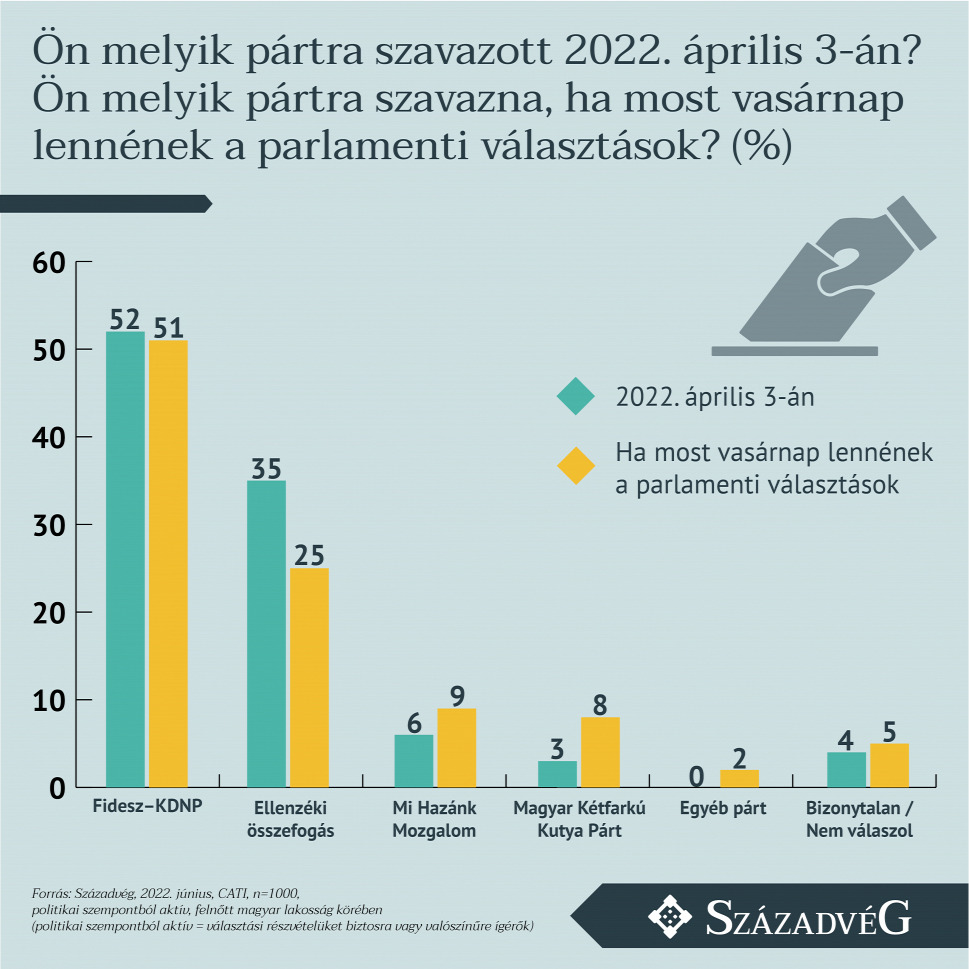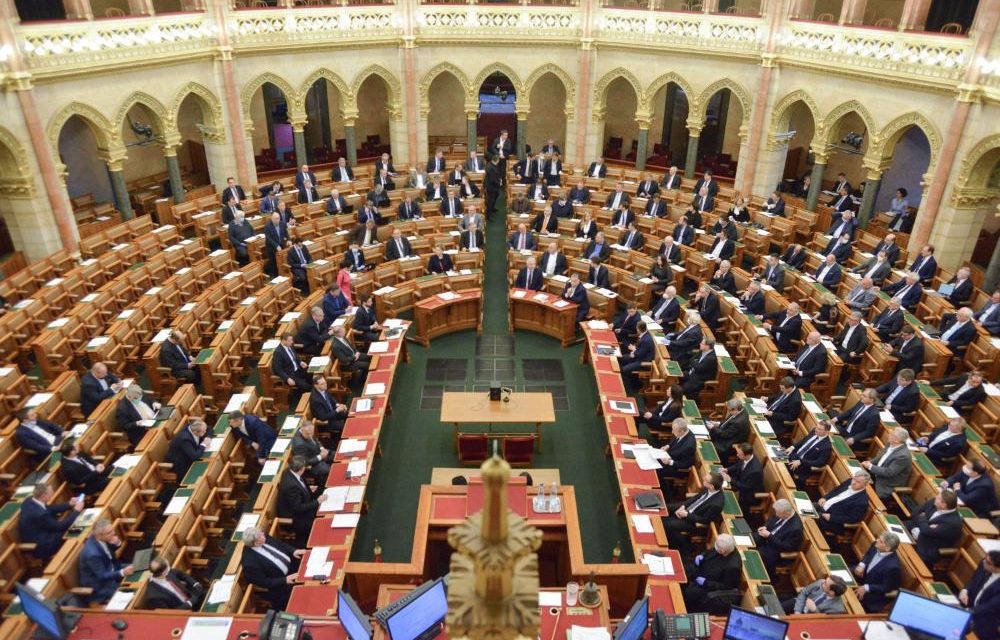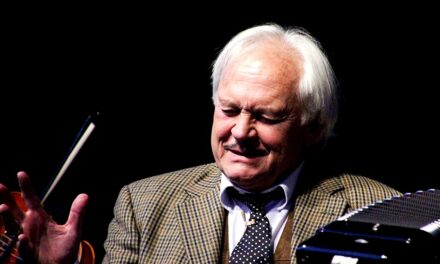The popularity of the opposition coalition decreased by 10 percentage points, from 35 to 25 percent, in the period since the parliamentary elections on April 3, while the governing parties stably maintain their leading position, according to the latest poll by Századvég.
The survey mapped which politically active Hungarians – according to their self-report – supported which political force on April 3, and which party they currently sympathize with, and then compared the results.
THE SUPPORT OF THE GOVERNMENT PARTIES HAS NOT CHANGED VALIDLY IN THE PAST MONTHS, THE RIGHT-WING CAMP CAN BE CONSIDERED SOLID.
The survey points out that - based on self-report - 52 percent of respondents voted for the Fidesz-KDNP alliance on April 3, and 51 percent
HE WOULD CURRENTLY SUPPORT THE GOVERNING PARTIES IN A NATIONAL ASSEMBLY ELECTION TO BE HELD THIS SUNDAY.
On the other hand, the popularity of the left-liberal block - continuing the trend started earlier - continued to fall. While 35 percent of politically active Hungarians - according to self-report - voted for the opposition coalition in April, until
CURRENTLY, JUST 25 PERCENT OF THEM SYMPATHIZE WITH THE UNITED LEFT FORCES, WHICH REPRESENTS A 10 PERCENTAGE SHRINKAGE IN THE BALLIBERAL VOTING CAMP.
THE COMBINED LEFT BLOCK LOST THE SUPPORT OF MORE THAN A QUARTER OF THEIR VOTERS IN APRIL.
According to Századvég, the phenomenon can presumably be explained by the fact that
the left-wing parties - in the political-economic situation exacerbated by the Russian-Ukrainian conflict and its consequences - are focusing on their own internal crisis and not on issues determining the future of the Hungarian people, which caused significant disillusionment among left-liberal voters.

Source: End of the century
Among other things, a serious conflict erupted around former Prime Minister candidate Péter Márki-Zay in connection with the settlement of campaign funds, due to tensions between the Democratic Coalition and Momentum, the session of the general assembly in the capital was canceled at the end of May, and the chairman of Jobbik, Péter Jakab, resigned under pressure from his own party members. he was forced from the post of party chairman. While the attention of the left-wing forces was tied up by similar technical and power conflicts, they distanced themselves from their own voters and their everyday problems.
The united left-wing bloc lost the support of more than a quarter of those who voted for them in April.
VOTERS DISAPPOINTED WITH THE OPPOSITION COALITION AND ITS PARTIES MOVED TO THE OUR HAZÁNK MOVEMENT AND THE HUNGARIAN TWO-TAILED DOG PARTY.
Based on the survey, it can be stated that Mi Hazánk and the Kétfarkú Kutya Párt were able to successfully appeal to a considerable number of voters who broke away from the opposition coalition. Accordingly, the support of Mi Hazánk increased from 6 to 9 percent from April to June, while the base of the Kétfarkú Kutya Párt increased from 3 to 8 percent. Currently, 2 percent of respondents would vote for other parties.
SOURCE: Origo
Featured image: MTI/ILLYÉS TIBOR













